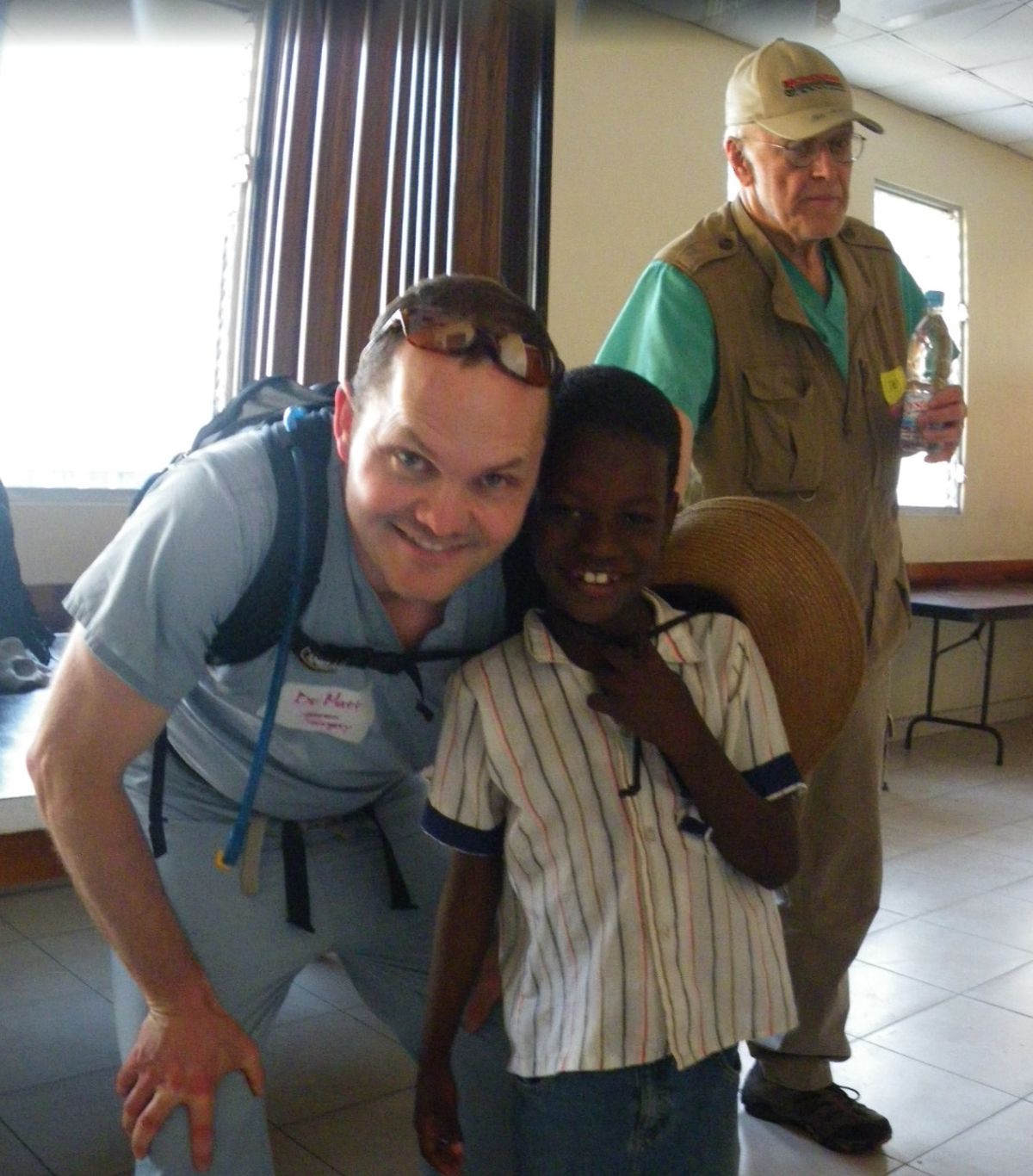Surgeon improvises to save lives in Haiti’s chaos

Dr. Mathew Rawlins answered the phone and changed his life.
Within hours the surgeon packed his bags, hugged his family and left the comforts of Spokane for the ravages of Haiti, answering a pledge he had made years ago to use his medical skills to save the lives of those wounded by natural disaster.
When people suffer traumatic injuries, it is surgeons such as Rawlins who tend to them first.
So when he arrived in Haiti five days after the magnitude 7.0 earthquake shook the impoverished country, he encountered a crisis that had already surged past his area of expertise.
Women, men and children with terrible injuries – crushed limbs, infected wounds and shattered bones – were everywhere. Many had already undergone initial amputations and now awaited follow-up care.
The carnage was immense. Rawlins’ fright and sense of vulnerability compounded his exhaustion.
He heard gangs of young men were looting shops and hurting people.
“I really wondered what I had gotten myself into,” he said this week after returning home. “Everything was complete chaos.”
Offer made six years ago
Rawlins hadn’t expected the call to help. It had been six years since he checked a questionnaire box without much thought while attending a meeting of physicians associated with the Church of Jesus Christ of Latter-day Saints.
It was a promise to respond in the event of human suffering on such a staggering scale.
In the years since, Rawlins has treated thousands of patients, both as a general surgeon with Rockwood Clinic and as a trauma specialist working in the emergency room at Providence Sacred Heart Medical Center.
He didn’t give much thought to the pledge he had made with a simple pencil mark. Yet when the phone rang, he didn’t hesitate.
“I knew I had to go,” he said.
Plan went awry immediately
The plan was to fly out of Denver in a cargo plane filled with supplies and land in Port-au-Prince. But problems with the planes meant a new destination, the Dominican Republic, which shares the island of Hispaniola with Haiti.
Each person on the medical team carried one rucksack holding personal belongings and two duffel bags crammed with medical supplies. Two bus rides delivered the team into the ruins of Port-au-Prince.
People were everywhere, congregating in the streets, plazas and parks.
Many were among the 2.5 million left homeless by the temblor.
Others refused to return to their homes, frightened that aftershocks would bring down structures left standing.
In one park, smaller than the lower half of Manito, Rawlins said, tens of thousands of survivors had set up camp.
“I’m sure they are still there now, eating, sleeping, bathing and grieving,” he said.
After the team arrived, its members realized “we just didn’t know where, exactly, to go,” Rawlins said.
So they set up a clinic at one of the five LDS chapels in the Haitian capital, down the street from a hospital.
The hospital’s name is “Sacre Coeur,” French for Sacred Heart. Rawlins said he drew strength from the name connection to the Spokane medical center.
Put to work on an amputation
Upon arrival at the hospital, Rawlins simply walked in the front door and told them he was an American there to help; “10 minutes later I was doing an above-knee amputation,” he wrote in a text message he’s saved on his phone.
“They didn’t check my credentials. Instead they said, ‘Great. Care for this little girl.’ ”
Rawlins told the story of another surgeon who had treated a man the night before. With all of the talk about electronic medical records improving care, Rawlins noted the man’s medical history existed only on a single sheet of paper outlining his recent amputation, tucked inside his hospital gown.
The hospital was made crude and dangerous by the disaster, Rawlins said. Walls were cracked, and one operating room had a 2-foot hole from the force of the earthquake.
Surgical instruments – including saws for cutting off limbs – were washed in a plastic tub filled with Betadine. Rawlins recounted how he had had to sterilize his own instruments as best he could next to a toilet in a small bathroom.
The conditions were appalling. Rawlins recalled of how he had to redo an amputation on a 6-year-old girl. He left her in the care of her mother after the operation. The only painkiller available was a handful of Tylenol.
After patients were operated on, recovery included removal to the hospital courtyard, where they were laid on sheets atop the concrete in rows.
“We were doing operations that just seemed horrendous,” Rawlins said. “To have to lower your expectations for patients so far was really heart-wrenching.
“We had to ask ourselves, ‘How can we do this?’ But the only other option was to let them die.
“So we overcame the distress about our patients not having beds or IVs or oxygen. Not even a roof. You just leave them outside to bake under the sun.”
And yet lives were being saved.
Secured beds aboard a ship
The hospital ran out of supplies after a few days, even as patients kept arriving.
Rawlins found a colonel and eventually was able to secure 12 beds aboard the USS Comfort, the Navy’s hospital ship.
He raced back to his hospital and loaded patients into small pickup trucks and other vehicles and delivered them to a port to be transferred to the ship. After a week in Haiti he returned home, frustrated, humbled and thankful. It was his first medical mission trip.
“We did some good, but we left the country with so many people in need of care,” he said. “If asked, I’ll go back.”